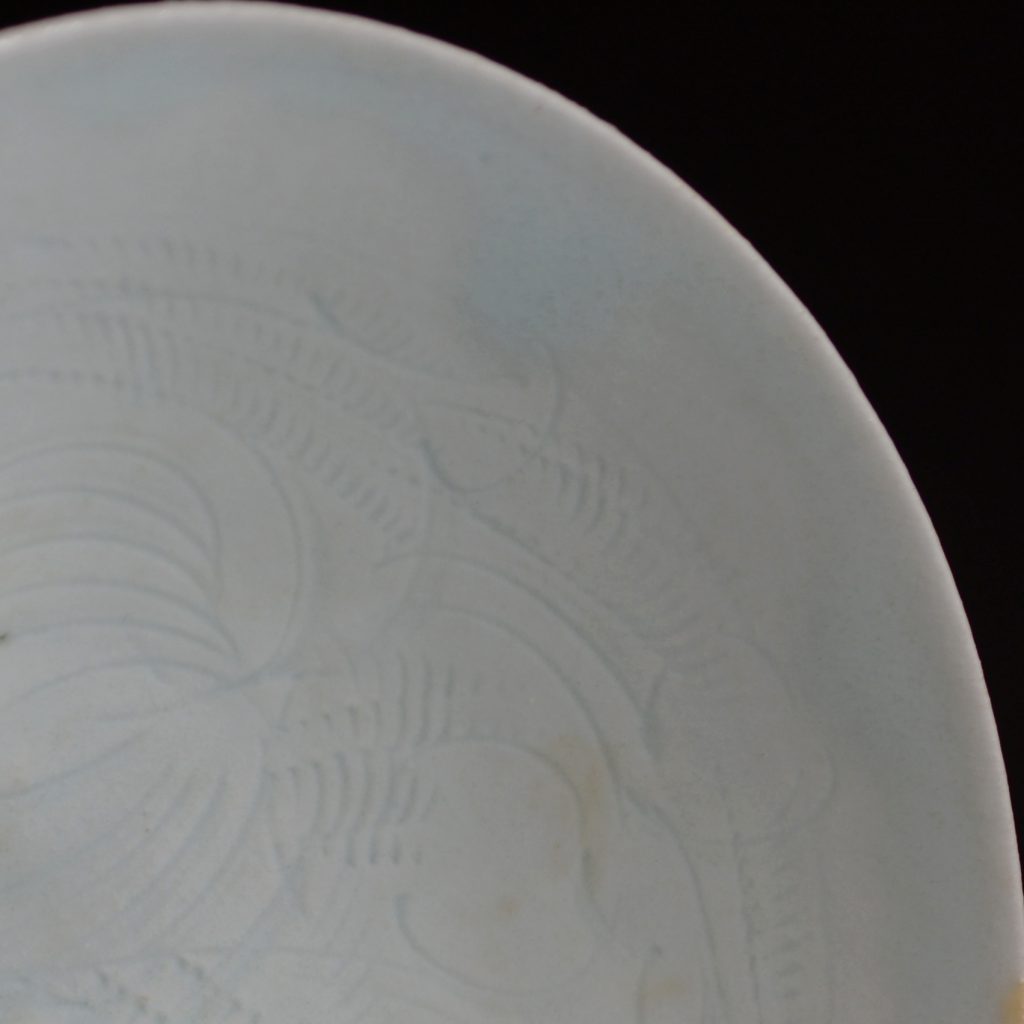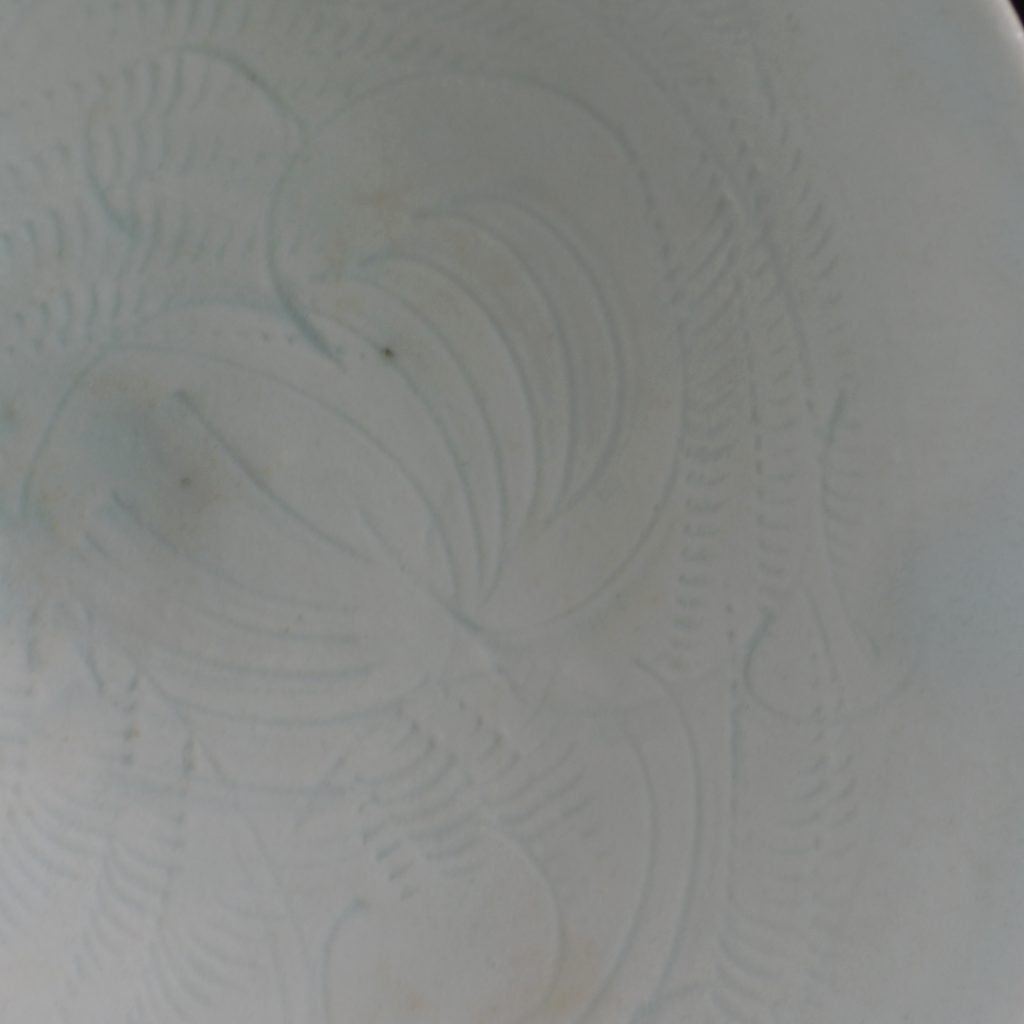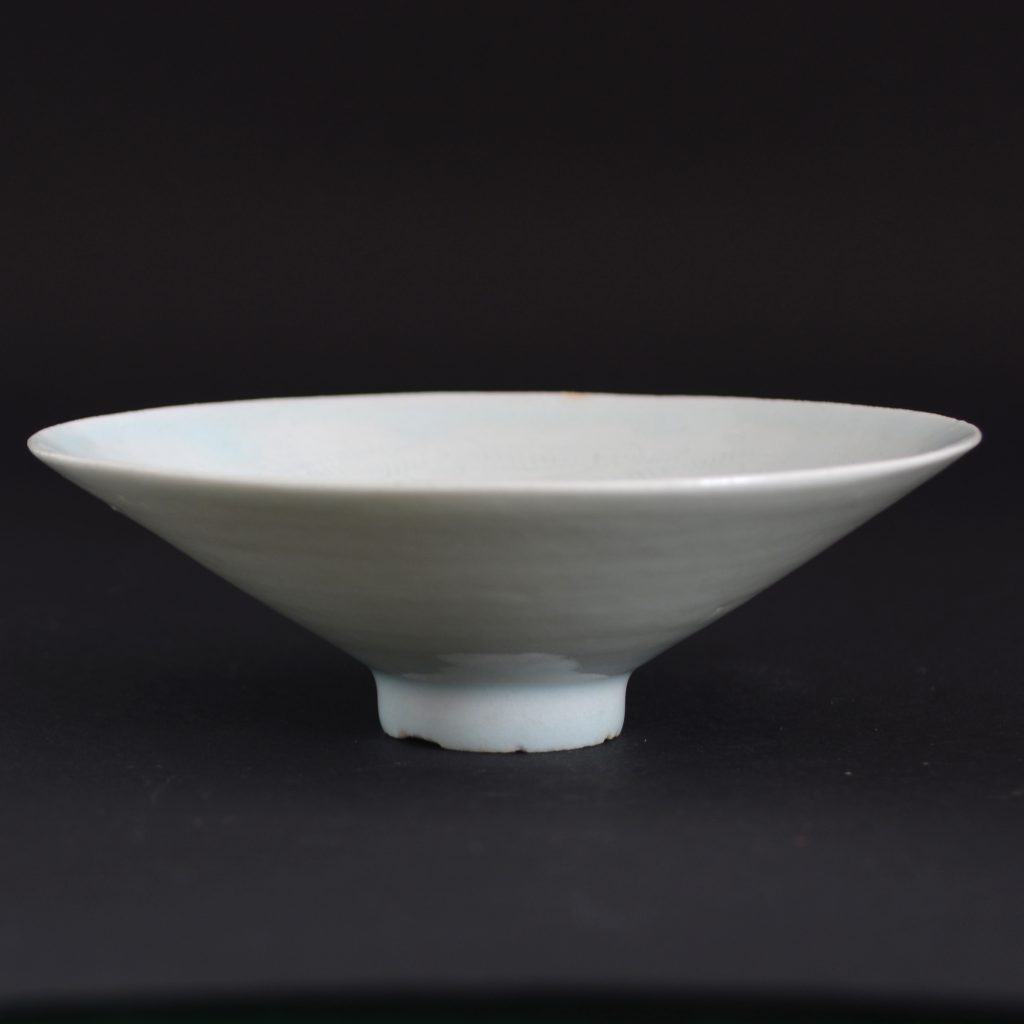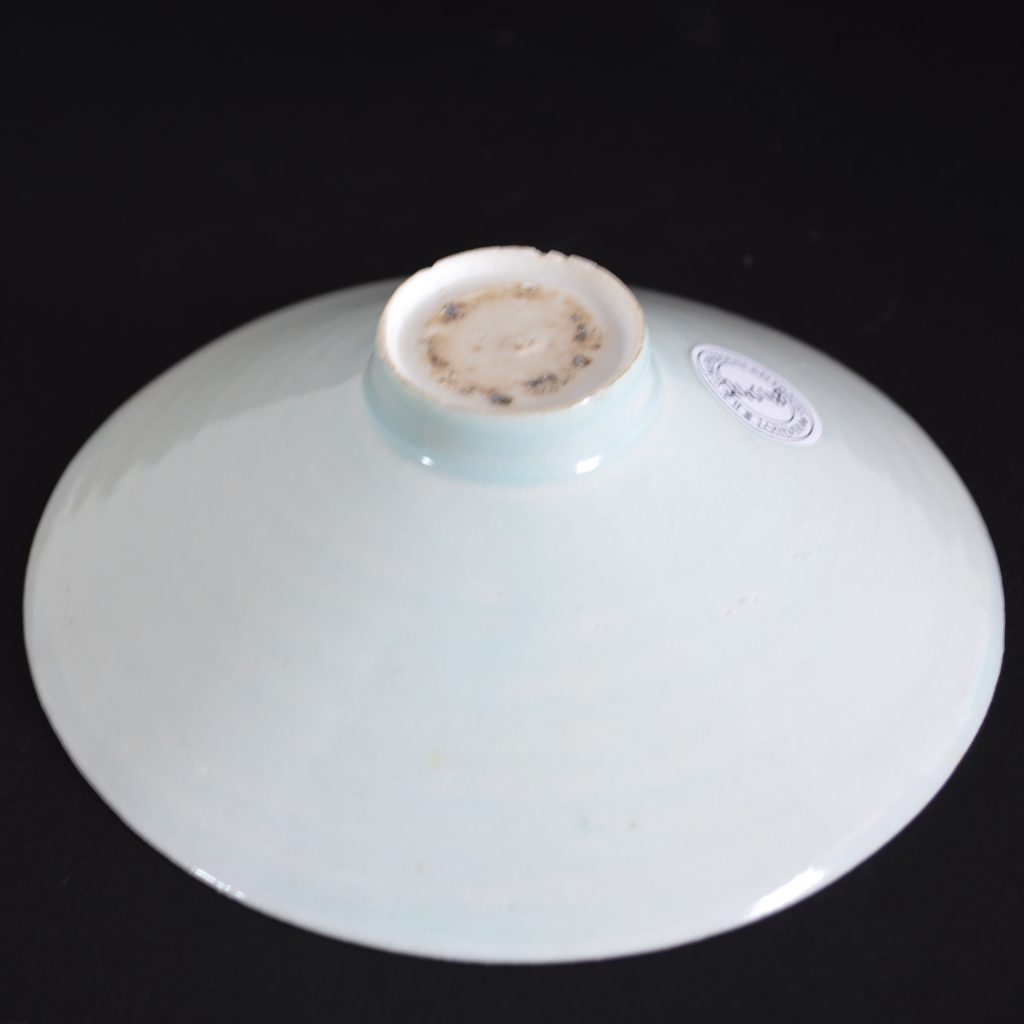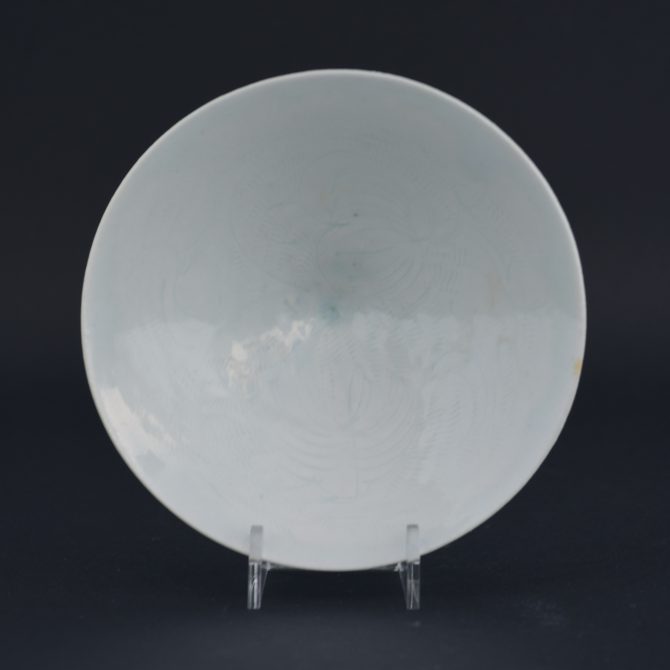
SONG DYNASTY c.11 th or 12th Century Bowl
A very finely potted Song Qingbai porcelain bowl from one of the Jingdezhen kilns, 11th or 12th century. The carved decoration, using a stylus and combs if of foliage and flowers. The glaze is thin but has quite a strong blue tinge to it.
SOLD
- Condition
- In good condition but with a shallow chip to the footrim c.6 x 1 mm and three other minute chips to the footrim, a tiny rim frit filled c.2 x 1 mm.
- Size
- Diameter : 12 cm (4 3/4 inches)
- Provenance
- Capital Gallery, Hong Kong, 2nd March 1997. An English Private Collection.
- Stock number
- 24548
Information
Qingbai Ware :
The earliest known qingbai wares were produced in Jingdezhen in Jiangxi province around the late 10th century and are characterized by faint pale-blue glazes on low, wide forms. Qingbai continued to be enormously popular and highly produced throughout the Song dynasty (960-1279) and was prevalent in the Yuan dynasty (1279-1368), but slackened during the Ming dynasty (1368-1644) until being replaced by tianbai, ‘sweet white’ ware. The initial forms of qingbai were simple bowls and dishes, but by the mid-Northern Song the forms had advanced to include a wide variety of objects used for daily life such as ewers, boxes, incense burners, granary models, vases, jars, sculptures, cups, cupstands, water droppers, lamps, grave wares, and tools for writing and painting. The precedent for the majority of these forms is found in earlier metalwork and lacquer and Rawson has suggested that the imitation of silver was the primary force behind the production of white wares, including qingbai. See our `History` section for more information about Song Porcelain and Stoneware by Mindy M. McDonald
